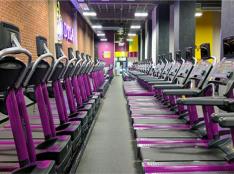Zone 1 is referred to as the active recovery zone because workouts in this zone will feel very easy. You can talk in full sentences since breathing is effortless. This is a good zone to recover from a hard workout. It's also a good place to start if you're new to exercise. Although zone 1 involves a low-intensity effort, training here bestows many health benefits such as lower blood pressure, lower cholesterol and decreased body fat. If your primary fitness goal is to improve health, this is the zone for you.
Zone 2 is the aerobic endurance zone. You're working harder than zone 1 so breathing is more labored; however, you can still talk fairly easily. This zone, often referred to as the fat-burning zone, will improve your ability to metabolize fat as an energy source, and increase your ability to use oxygen for energy production. A cyclist training for a 100-mile bike ride will spend many hours pedaling in zone 2 to prepare for a prolonged effort.
Zone 3 is the threshold zone, where breathing becomes labored and talking becomes more difficult. It's also the place where you can significantly enhance your athletic performance. Training here will improve your ability to burn carbohydrates efficiently, and increase your lactate threshold, which is the best predictor of endurance performance.
More: Heart Rate Readings, What Do They Mean?
Zone 4, known as the lactate zone, is where your workouts get hard. You will not be talking. Competitive athletes spend a significant amount of time in this zone because it increases lactate threshold and the ability to run, ride, and swim faster for longer. For instance, a runner who is preparing for the cross-country championships could perform a series of four, eight-minute zone 4 intervals with four minutes of recovery between hard efforts. This would help the runner peak for the championship event.
Finally, zone 5 is all about pain. Known as the anaerobic zone, it's not sustainable for long periods—a few seconds to a maximum of a few minutes—because it utilizes the body's anaerobic energy systems.
According to Aerobics and Fitness Association of America, anaerobic energy is the point at which the body can no longer meet its demand for oxygen and anaerobic metabolism is accelerated.
Training intervals in this zone will increase your speed and can also enhance your VO2 max (the maximum amount of oxygen the body can consume during high-intensity exercise). An example of this is a Tabata workout, where you do 20 seconds of high-intensity work with 10 seconds of recovery repeated eight times (a total of four minutes of work). This may not sound too hard but the 20 second effort is all-out and the 10 seconds doesn't give you ample time to recover. Done properly, Tabata workouts get your heart rate into zone 5.
- 2
- of
- 4
About the Author
Tyrone Holmes
Get ACTIVE on the Go


Couch to 5K®
The best way to get new runners off the couch and across the finish line of their first 5K.
Available for iOS | Android





Discuss This Article